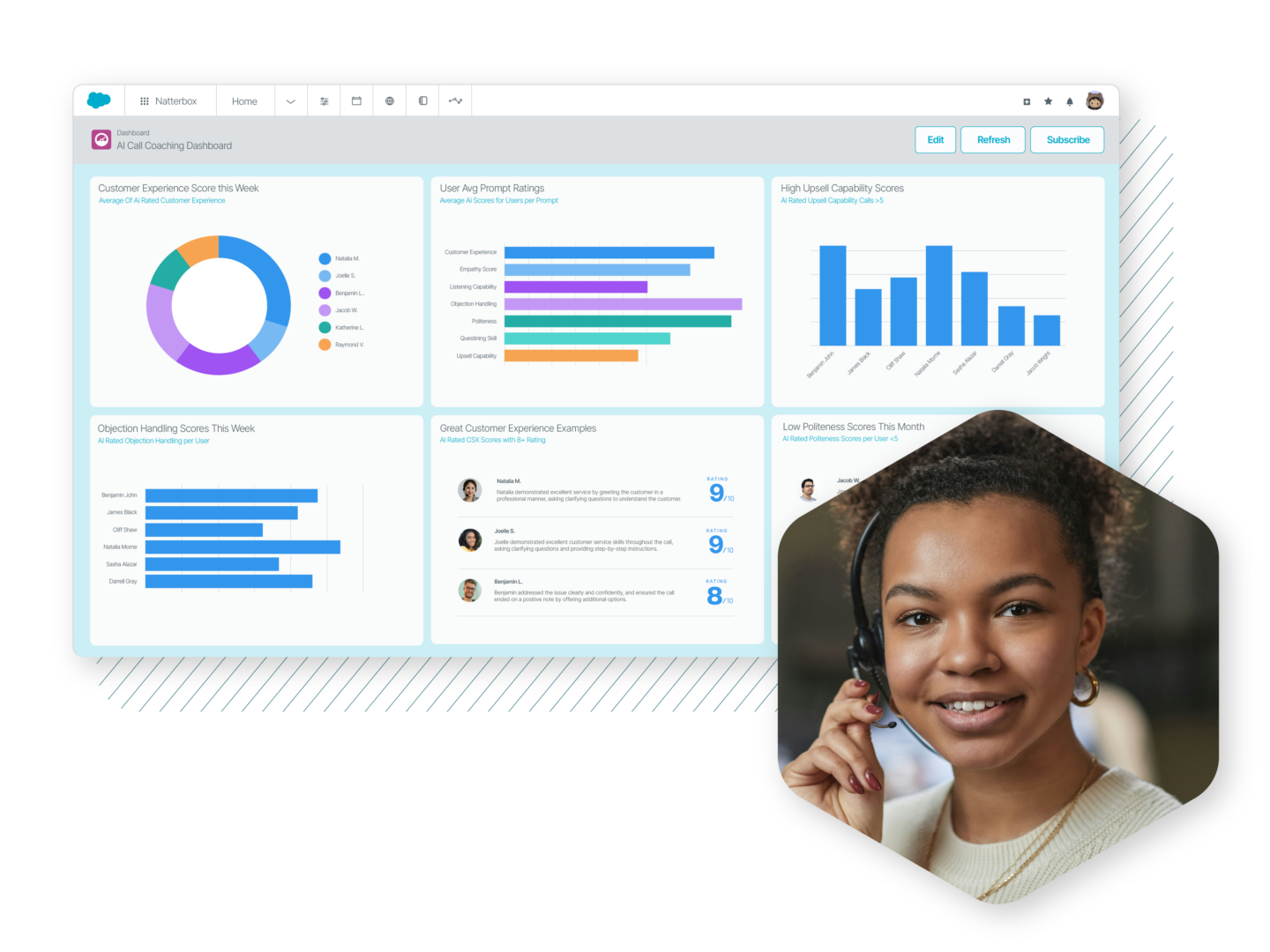Voice
Leveraging Speech Analytics to Identify Problems In a Contact Center
Natterbox Team

In a contact center environment, it is crucial to identify and address problems early on to ensure agent performance, enhance the overall customer experience, and provide effective agent coaching. Traditional quality monitoring methods may not capture all the insights needed to drive performance improvements. Thankfully, speech analytics offers a powerful solution by analyzing spoken conversations to uncover valuable information. In this article, we will explore how leveraging speech analytics technology can help contact centers identify problems early, focusing on agent performance, customer experience, and agent coaching.
Optimizing Agent Performance:
Speech analytics enables contact centers to gain valuable insights into agent performance by automatically analyzing and categorizing calls based on predefined criteria. This technology can monitor various aspects, such as call handling time, call outcomes, tone of voice, adherence to scripts, and compliance with regulatory guidelines. By identifying patterns and trends in agent performance, contact center managers can address issues promptly, provide targeted training, and implement necessary coaching programs. Additionally, speech analytics can identify high-performing agents, enabling the organization to recognize and replicate their best practices across the team. Through optimizing agent performance, contact centers can deliver consistent and exceptional customer service, ultimately leading to improved customer satisfaction and loyalty.
Enhancing the Customer Experience:
Speech analytics plays a crucial role in identifying pain points and improving the customer experience. By analyzing spoken conversations, contact centers can identify common customer complaints, identify root causes for escalations, and pinpoint customer dissatisfaction triggers. This information enables contact center managers to take proactive steps to address these issues. For example, identifying long hold times or frequent transfers can prompt process improvements or changes in staffing patterns to minimize customer frustration. Furthermore, speech analytics can uncover customer sentiment, enabling the organization to gauge levels of satisfaction and identify opportunities for personalized interactions. By leveraging these insights, contact centers can enhance the overall customer experience, leading to increased customer loyalty and advocacy.
Proactive Agent Coaching:
Speech analytics is an invaluable tool for enabling proactive agent coaching. By automatically analyzing calls, this technology can identify missed upsell or cross-sell opportunities, compliance deviations, or instances of agents not following established scripts. Contact center managers can use these insights to provide targeted coaching and training to agents on specific areas for improvement. Instead of relying solely on random call monitoring, speech analytics allows managers to focus their efforts on specific coaching needs and deliver actionable feedback that can help agents enhance their skills and performance. Proactive agent coaching helps build a culture of continuous improvement within the contact center, leading to higher agent productivity, improved customer interactions, and better overall performance.
Regulatory Compliance and Risk Mitigation:
Speech analytics technology can also help contact centers ensure regulatory compliance and mitigate risks associated with non-compliant behavior. By automatically monitoring calls for compliance deviations with industry regulations and internal policies, this technology alerts management to potential issues. Contact center managers can then take immediate action to address any compliance gaps, provide additional training on regulatory requirements, and implement proactive measures to prevent future violations. By leveraging speech analytics for compliance monitoring, contact centers can minimize the risk of penalties, legal disputes, and reputational damage, ensuring adherence to industry standards and regulatory guidelines.
Continuous Improvement and Business Insights:
Speech analytics offers a wealth of business insights that can drive continuous improvement in contact center operations. By analyzing calls, contact center managers can identify patterns, trends, and correlations across various operational metrics. This can include identifying recurring customer concerns, uncovering opportunities for product or service enhancements, or detecting inefficiencies in processes. These insights help contact centers make data-driven decisions, allowing for continuous improvement and optimization of business operations. By leveraging speech analytics for business insights, contact centers can stay ahead of the competition, drive innovation, and position themselves as customer-centric organizations.
Why You Should Invest In Speech Analytics
Leveraging speech analytics technology in a contact center environment provides numerous benefits for identifying problems early. From optimizing agent performance and enhancing the customer experience to enabling proactive agent coaching, ensuring regulatory compliance, and driving continuous improvement, speech analytics offers powerful insights. By harnessing the capabilities of speech analytics, contact centers can unlock invaluable data that aids in identifying and addressing problems promptly, resulting in improved agent performance, exceptional customer experiences, and overall business success. Embrace speech analytics as a transformative tool in your contact center environment and take your customer interactions to new heights of excellence.



